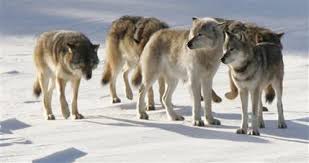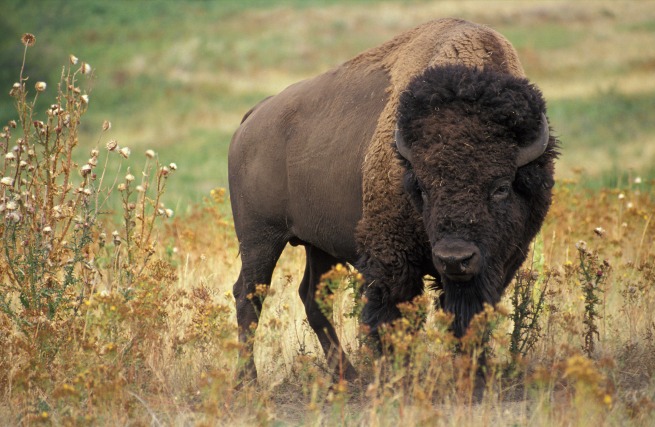Post by dinosauria101 on Feb 13, 2019 21:32:04 GMT 5
Grey Wolf (pack of 5) - Canis lupus
The Grey Wolf (Canis lupus) is the largest wild canid, males averaging between 70 and 110 pounds depending on subspecies. The Wolf has a specialized body that has made it one of the world's most efficient hunters. Its powerful neck is a very important adaptation: it has to be strong to support the wolf's large head and is crucial for bringing down prey. The skull is 31cm (12 inches) long and is armed with an impressive array of large canines and carnassial teeth which, when coupled with huge jaw muscles that are evident from the large sagittal crest and wide zygomatic arches, give it an incredible biteforce that is strong enough to break the bones of prey and even crack the femur of moose. Wolves primarily feed on medium to large sized ungulates (up to the size of bison 10–15 times larger than themselves), though they are not fussy eaters. Medium and small sized animals that may supplement the diet of wolves include marmots, beaver, hares, badgers, foxes, weasels, ground squirrels, mice, hamsters, voles and other rodents, as well as insectivores.

American Bison - Bison bison
The American bison (Bison bison), also commonly known as the American buffalo, is a North American species of bison that once roamed the grasslands of North America in massive herds. Their range once roughly comprised a triangle between the Great Bear Lake in Canada's far northwest, south to the Mexican states of Durango and Nuevo León, and east along the western boundary of the Appalachian Mountains. bison has a shaggy, long, dark brown winter coat, and a lighter weight, lighter brown summer coat. As is typical in ungulates, the male bison are slightly larger than the female. Plains bison are often in the smaller range of sizes, and Wood bison in the larger range. Head-and-body length ranges from 2 to 3.5 m (6.6 to 11.5 ft) long, the tail adding 30 to 91 cm (12 to 36 in). Shoulder height in the species can range from 152 to 186 cm (60 to 73 in). Typical weigh can range from 318 to 1,000 kg (700 to 2,200 lb), with the plains bison averaging 770 kg (1697 lbs) and the wood bison averaging 910 kg (2006 lbs).

Credit to Wikipedia
The Grey Wolf (Canis lupus) is the largest wild canid, males averaging between 70 and 110 pounds depending on subspecies. The Wolf has a specialized body that has made it one of the world's most efficient hunters. Its powerful neck is a very important adaptation: it has to be strong to support the wolf's large head and is crucial for bringing down prey. The skull is 31cm (12 inches) long and is armed with an impressive array of large canines and carnassial teeth which, when coupled with huge jaw muscles that are evident from the large sagittal crest and wide zygomatic arches, give it an incredible biteforce that is strong enough to break the bones of prey and even crack the femur of moose. Wolves primarily feed on medium to large sized ungulates (up to the size of bison 10–15 times larger than themselves), though they are not fussy eaters. Medium and small sized animals that may supplement the diet of wolves include marmots, beaver, hares, badgers, foxes, weasels, ground squirrels, mice, hamsters, voles and other rodents, as well as insectivores.
American Bison - Bison bison
The American bison (Bison bison), also commonly known as the American buffalo, is a North American species of bison that once roamed the grasslands of North America in massive herds. Their range once roughly comprised a triangle between the Great Bear Lake in Canada's far northwest, south to the Mexican states of Durango and Nuevo León, and east along the western boundary of the Appalachian Mountains. bison has a shaggy, long, dark brown winter coat, and a lighter weight, lighter brown summer coat. As is typical in ungulates, the male bison are slightly larger than the female. Plains bison are often in the smaller range of sizes, and Wood bison in the larger range. Head-and-body length ranges from 2 to 3.5 m (6.6 to 11.5 ft) long, the tail adding 30 to 91 cm (12 to 36 in). Shoulder height in the species can range from 152 to 186 cm (60 to 73 in). Typical weigh can range from 318 to 1,000 kg (700 to 2,200 lb), with the plains bison averaging 770 kg (1697 lbs) and the wood bison averaging 910 kg (2006 lbs).

Credit to Wikipedia




